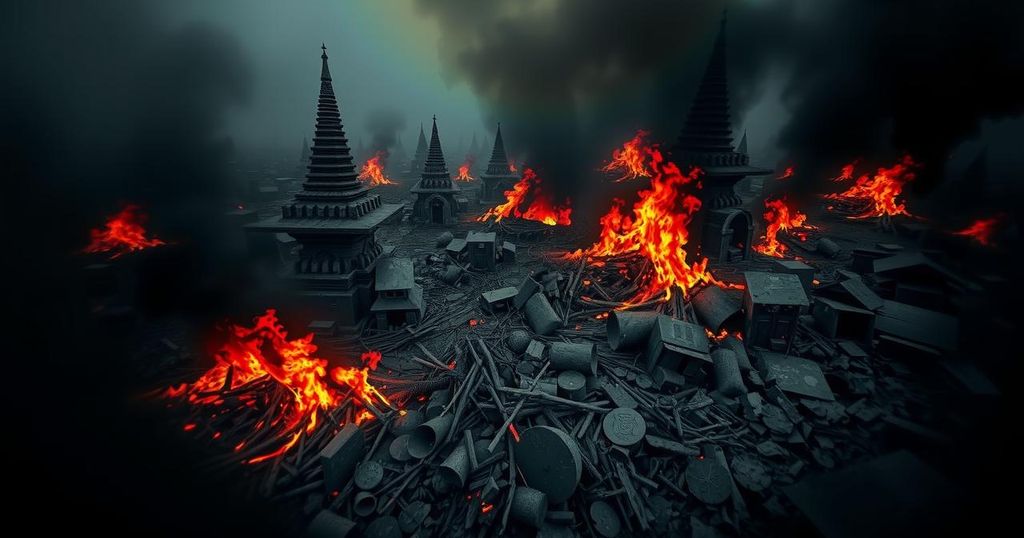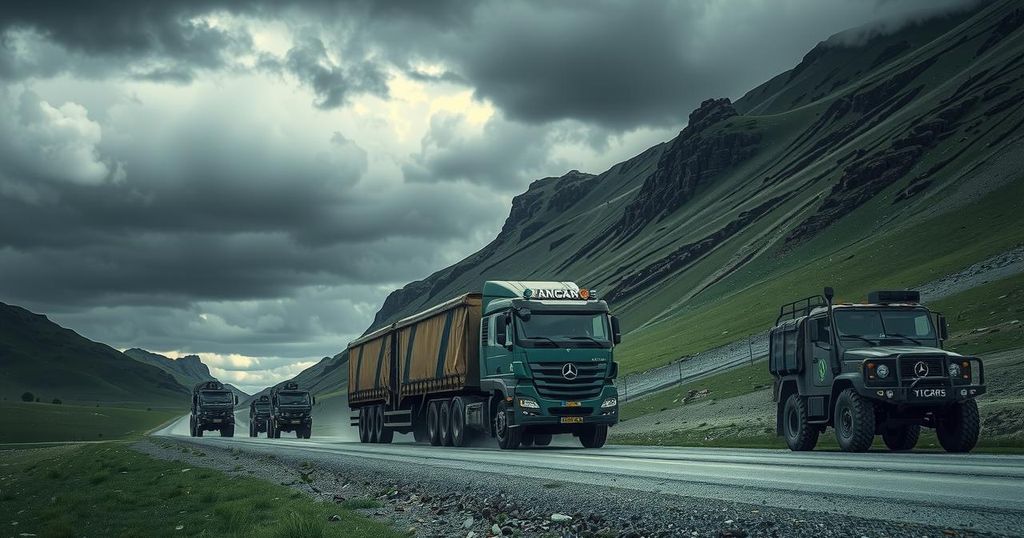Myanmar Civil War: Strategic Shifts and Tactical Challenges Ahead
In late October 2023, pro-democracy resistance fighters in Myanmar approached Mandalay, marking a significant shift in the civil war as various ethnic armies unite to reclaim territory. However, the Tatmadaw retains an advantage in air superiority and resource capability, complicating efforts to secure urban areas. Enhanced motivations among resistance forces juxtapose the military’s conscription efforts, leaving the war’s outcome uncertain as tactics evolve.
As of late October 2023, pro-democracy resistance fighters in Myanmar have made significant territorial advancements, now positioned just a few kilometers from Mandalay, the country’s second-largest city. This evolution in the Myanmar civil war is notable, as the conflict had previously been largely confined to the rugged terrains of ethnic states. Several ethnic armies have united in their efforts to reclaim control over substantial rural areas, thereby shrinking the Tatmadaw’s power to major urban locales. The approach toward Mandalay signals a pivotal shift in the civil war dynamics, compelling the ruling State Administration Council (SAC) to recognize the steadfast determination of rebel forces. Furthermore, this move highlights the Tatmadaw’s retreat to urban centers, a consequence of tactical setbacks experienced over the previous year. The resistance’s growing ambition to engage in urban warfare, however, brings with it inherent risks, especially in light of the Tatmadaw’s air superiority. The transition from the rainy season to the dry season introduces new challenges for the pro-democracy fighters. Enhanced weather conditions favor the Tatmadaw’s military operations, with advanced technologies such as attack helicopters and drones leading to significant casualties among both combatants and civilians. David Eubank, head of the Free Myanmar Rangers, noted, “Improved weather favors the government military,” highlighting the tactical advantages the Tatmadaw may exploit. The Tatmadaw is currently fortified by an increase in troop numbers due to military conscription and sustained support from China and Russia. In contrast, resistance groups, though validated by recent territorial gains, are encountering new challenges as urban combat environments reveal their lack of preparedness. Reports suggest that Tatmadaw forces are deeply entrenched and fortified, deploying advanced countermeasures against rebel drone efforts.
The civil war in Myanmar, which intensified following the military coup in February 2021, reflects a struggle for democracy against an entrenched military regime. Pro-democracy groups formed, primarily comprising ethnic armed organizations and urban forces, in response to widespread discontent with military rule. Historically, these groups have dominated rural guerrilla tactics; however, changing combat zones toward urban centers have necessitated strategic adaptations. This shift poses heightened risks as the military employs superior aerial capabilities and modern warfare technology, influencing the war’s course.
In summary, the Myanmar civil war is undergoing a transformative period, marked by the pro-democracy resistance’s advancements towards urban centers like Mandalay. While this represents a strategic offensive, the Tatmadaw’s advantages in air power and resources challenge the resistance’s efforts. Nonetheless, the commitment and motivation of the resistance forces may enable them to persist despite these formidable obstacles. The outcome remains uncertain, dictated by evolving tactics and the potential for greater cooperation among opposition factions.
Original Source: www.geopoliticalmonitor.com






Post Comment